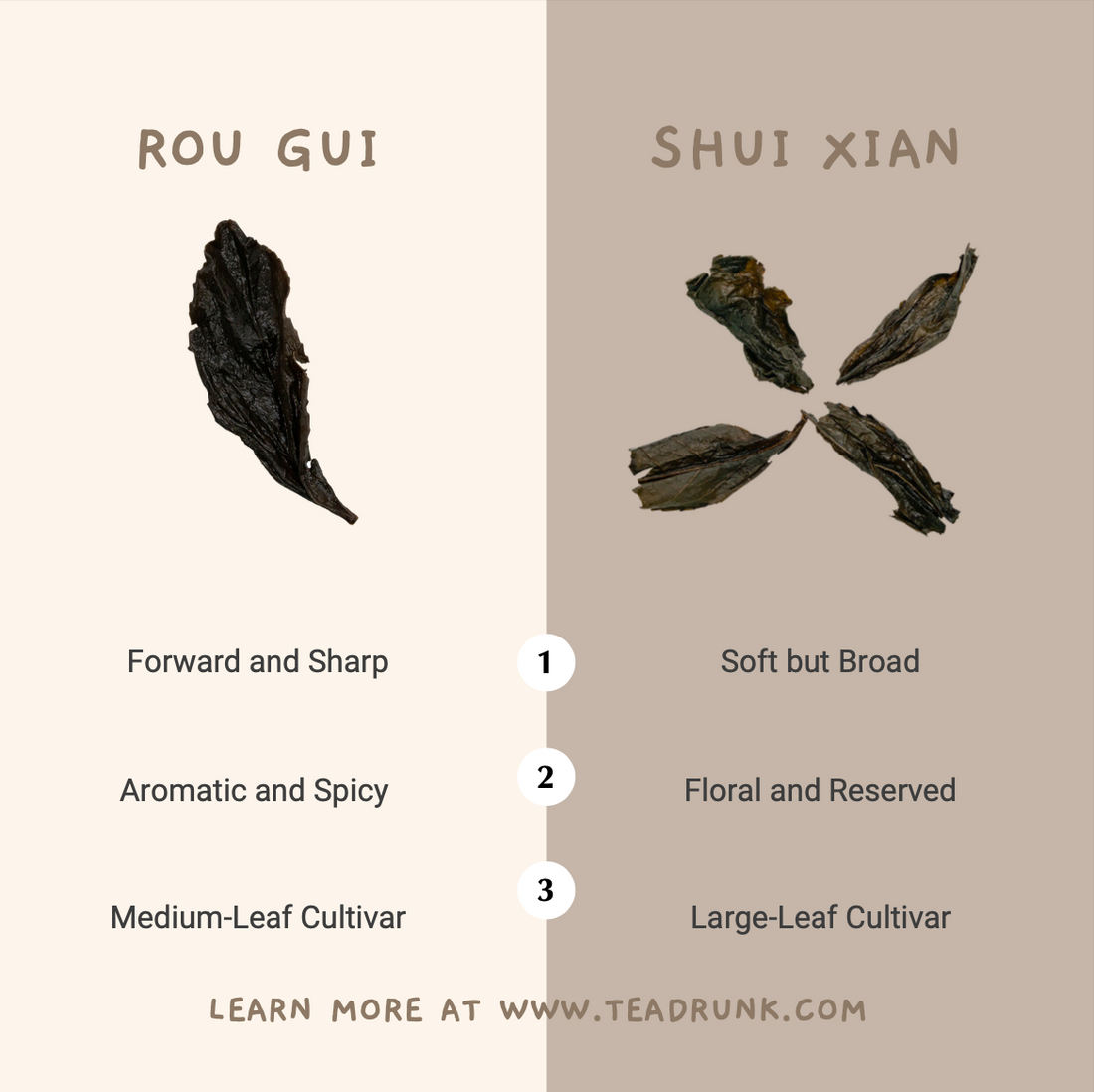These two teas are arguably the most prominent and popular cultivars in Wu Yi Shan. Let's break down how they are similar and how they are alike!
What is a Tea Cultivar?
Like all wine comes from grapes, all tea comes from the Camellia sinensis plant. These plants have hundreds of cultivars (or sub-types) like Pinot Noir is a grape and Merlot is a grape. Rou Gui is a tea plant and Shui Xian is a tea plant.
Rou Gui and Shui Xian are cultivars typically made into Yan Cha, a sub-category of Wu Long tea. The most prestigious region for growing Yan Cha is Wu Yi Shan, a UNESCO World Heritage Site.
The Situation in Wu Yi Shan
In the past decade, Yan Cha (also called Cliff tea) has become one of the most popular teas. Because of the attention and scale, Wu Yi Shan has quickly developed to be the most mature tea region in China. There are rigorous specifications on the tea's cultivation, terroir hierarchy, and processing. There's also high-level price transparency for Yan Cha, comparable to China's top green teas. Since 2010, the local government has restricted any planting of new cultivars within the Zheng Yan (true cliff) region of the UNESCO Site. This area is under strict observation as a very high standard binds it as a top terroir. This "stabilized" the cultivars within this prized terroir, making Rou Gui and Shui Xian two staple cultivars for the region for many years to come. This also creates a more focused appreciation for terroir. Connoisseurs geek out on the dozens of Rou Gui from different micro terroir within Zheng Yan without distraction from cultivar variances; the same goes for Shui Xian; we are now comparing apple with apple and orange with orange.
Cultivar Differences

Shui Xian is one of the oldest and most stable cultivars in Wu Yi Shan. It's the only tea in Wu Yi Shan that can receive the designation of Lao Cong if the tea trees reach 60-80 years old or Gao Cong at 40-60 years old.
Rou Gui grew in popularity during the 1980s and 90s. Though some Rou Gui trees are decades old, most are under 20 years old, relatively young.
Taste Differences
Shui Xian is known for its soft but broad body. It melts across your mouth and is more floral in taste. It has a gentle aroma with notes of orchids and is reserved with layered woodsy notes and a fruity aftertaste. Shui Xian has this distinctive downward mouthfeel. It is a classic example of the terroir and a tender Yan Cha we could drink daily.
Rou Gui is known for its bold, dominating, spicy, forward profile. Quite nearly the opposite of Shui Xian, but still somehow similar in certain aspects. It is considered to have a masculine quality to the cultivar with a signature assertion and well-defined minerality.
To make a world-class Rou Gui, it must not just be simply aggressive, but with mastery of craft, we can obtain a tea with some elements of creamy texture like sweet cream or even fruity notes. These are tricky things to get from this cultivar, so they are revered when tasted.
Now that you better understand these two famed cultivars, we recommend trying them side by side! Experiencing their differences and similarities is the best way to continue to learn! You can also pair them with Guided Tasting sessions and really deep dive into each.

